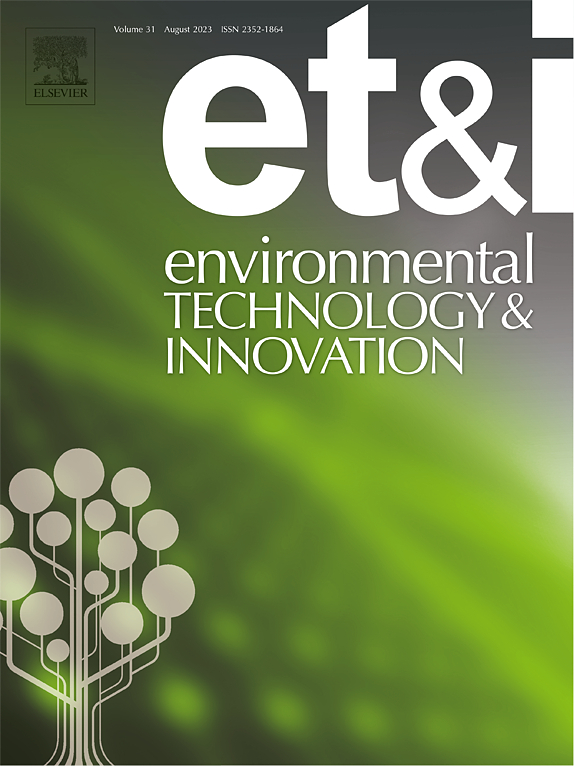Sustained release of persulfate and ferrous sulfate encapsulated in stearic acid for continuous pyrene degradation in groundwater
IF 6.7
2区 环境科学与生态学
Q1 BIOTECHNOLOGY & APPLIED MICROBIOLOGY
引用次数: 0
Abstract
Polycyclic Aromatic Hydrocarbons (PAHs) are persistent organic pollutants known for their carcinogenic, teratogenic, and mutagenic properties. A considerable amount of PAHs has been released into groundwater. Persulfate-based advanced oxidation processes (PS-AOP) are commonly employed to remediate such contamination. However, traditional in-situ chemical oxidation (ISCO) faces challenges such as concentration rebound and tailing. To address these issues, sodium persulfate sustained release materials (PDS@SA) and ferrous sulfate sustained release materials (FeSO4@SA) were developed using stearic acid (SA) as a binder. Batch and column experiments were conducted to evaluate the efficacy of pyrene degradation through PDS@SA activated by FeSO4@SA. The batch experiments showed that the optimal mass ratio of FeSO4@SA to PDS@SA was 1:2, achieving degradation efficiencies over 95 % for pyrene with various concentrations (5, 10, 15, 20 mg⸱L−1) within 2 h. The column experiments showed that sustained release materials (FeSO4@SA and PDS@SA) with a particle size of 5 mm achieved an average removal rate of 89.3 % during days 7–15, while those with particle sizes of 7.5 mm and 10 mm achieved average removal rates of 68.5 % and 74.6 % during days 15–23, respectively. Additionally, electron paramagnetic resonance (EPR) analysis confirmed sulfate radicals SO4-⸱ and hydroxyl radicals ⸱OH as the primary oxidative species during pyrene degradation. These findings suggested that the sustained activation of PDS by sustained release Fe2+ represents a viable method for degrading PAHs in groundwater.
求助全文
约1分钟内获得全文
求助全文
来源期刊

Environmental Technology & Innovation
Environmental Science-General Environmental Science
CiteScore
14.00
自引率
4.20%
发文量
435
审稿时长
74 days
期刊介绍:
Environmental Technology & Innovation adopts a challenge-oriented approach to solutions by integrating natural sciences to promote a sustainable future. The journal aims to foster the creation and development of innovative products, technologies, and ideas that enhance the environment, with impacts across soil, air, water, and food in rural and urban areas.
As a platform for disseminating scientific evidence for environmental protection and sustainable development, the journal emphasizes fundamental science, methodologies, tools, techniques, and policy considerations. It emphasizes the importance of science and technology in environmental benefits, including smarter, cleaner technologies for environmental protection, more efficient resource processing methods, and the evidence supporting their effectiveness.
 求助内容:
求助内容: 应助结果提醒方式:
应助结果提醒方式:


